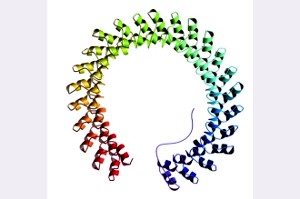Researchers at Oregon State University in Corvallis and University of Idaho in Moscow, with colleagues from GoNano Technologies also in Moscow, loaded biological molecules onto a type of nanostructure called “nanosprings” that are able to maximize surface area in chemical processes operating on a micrometer scale.
The researchers found a way to attach enzymes to silicon dioxide nanosprings so they function as a biological catalyst to facilitate other chemical reactions. With these enzymes added, nanosprings could be used to create biochemical sensors that react to a toxin far more quickly than conventional sensors. Other potential applications include medical treatments, where antibodies rather than enzymes are attached to nanosprings. The findings were reported in a recent issue of the journal Biotechnology Progress (paid subscription required).
Nanosprings curl thin nanowires into helical form, much like telephone handset cords or the old slinky toy, which enables them to concentrate more surface area into a small space. In June, GoNano Technologies received a Small Business Innovation Research grant from National Science Foundation to develop an application for capturing carbon dioxide with nanosprings for recycling into other chemical byproducts.


 RSS - Posts
RSS - Posts
You must be logged in to post a comment.